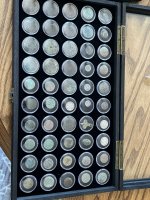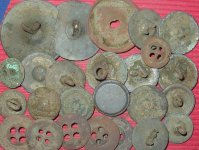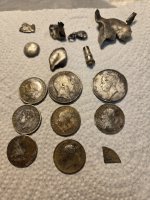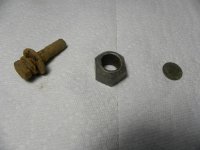T
TreasureTales
Guest
Here are some photos of a dagger I dug up about 3 years ago. I know it's a DAGGER, but I don't know who made it, where, and when? I took it to a couple of gun/knive shows and received conflicting information from each guy who looked at it. I've tried to find one like it on the internet, but without success. I'm hoping my fellow TNet members can help answer my questions.
(I just bought a new digital camera today so I could post pix on TNet because seeing everybody else post pix but not being able to do it myself was very frustrating!!!! It's an early Christmas present to myself.)
It's an early Christmas present to myself.)
Overall length is 10 3/4 inches The blade is iron. All the other pieces are bronze.
PHOTOS DELETED DUE TO NEW RULES FOR TREASURENET. TREASURENET REQUESTS NO COPYRIGHTED MATERIALS BE POSTED, MY MATERIAL IS MINE AND SHALL REMAIN MINE, HENCE THE DELETIONS. MY APOLOGIES TO THOSE WHO WOULD LIKE TO SEE PHOTOS OF THIS INTERESTING AND OLD DAGGER, BUT MY PROPERTY (PHOTOS, STORIES, ETC.) SHALL REMAIN UNDER MY CONTROL.
(I just bought a new digital camera today so I could post pix on TNet because seeing everybody else post pix but not being able to do it myself was very frustrating!!!!
 It's an early Christmas present to myself.)
It's an early Christmas present to myself.) Overall length is 10 3/4 inches The blade is iron. All the other pieces are bronze.
PHOTOS DELETED DUE TO NEW RULES FOR TREASURENET. TREASURENET REQUESTS NO COPYRIGHTED MATERIALS BE POSTED, MY MATERIAL IS MINE AND SHALL REMAIN MINE, HENCE THE DELETIONS. MY APOLOGIES TO THOSE WHO WOULD LIKE TO SEE PHOTOS OF THIS INTERESTING AND OLD DAGGER, BUT MY PROPERTY (PHOTOS, STORIES, ETC.) SHALL REMAIN UNDER MY CONTROL.











